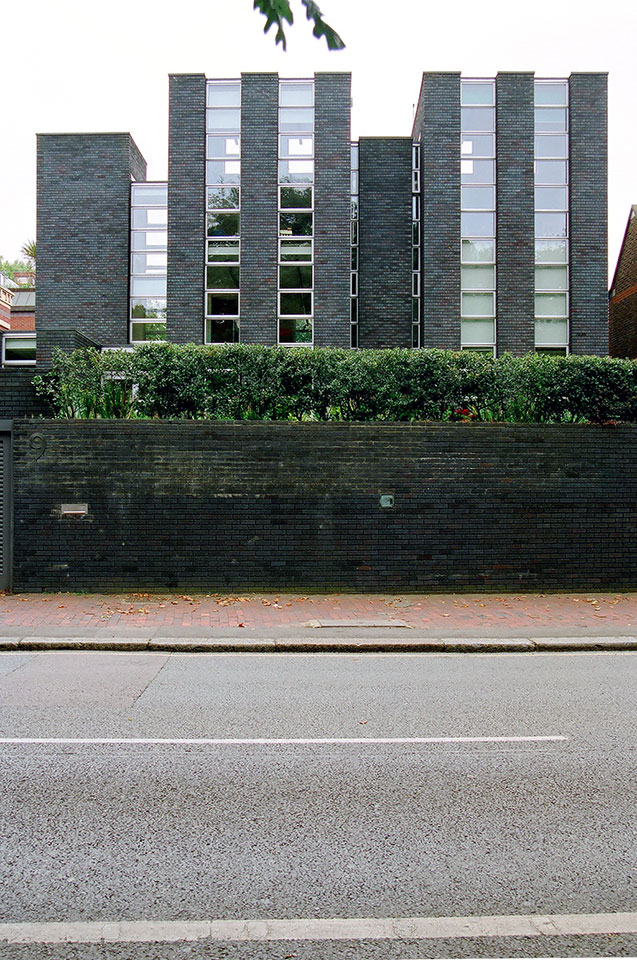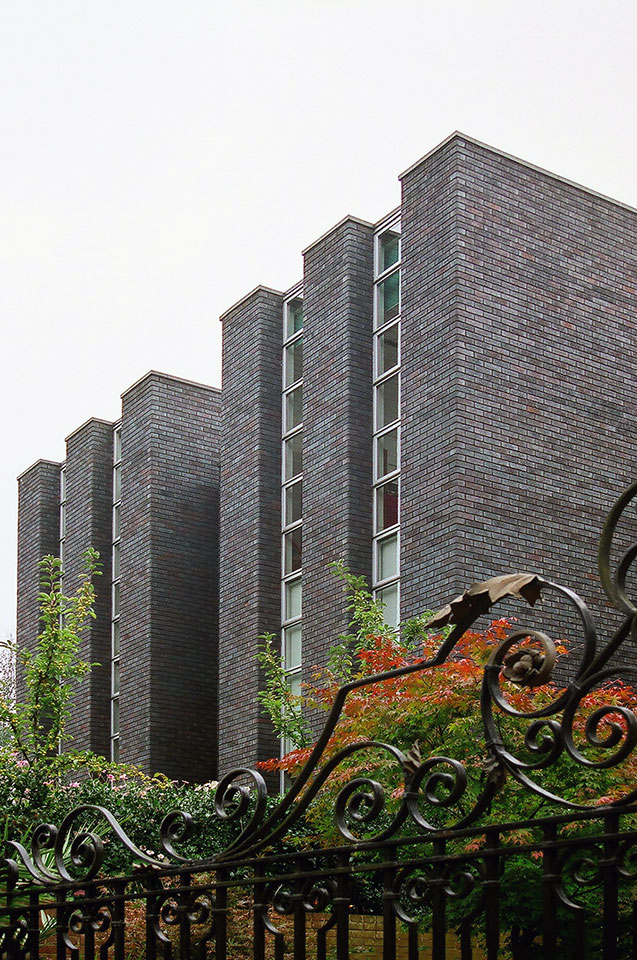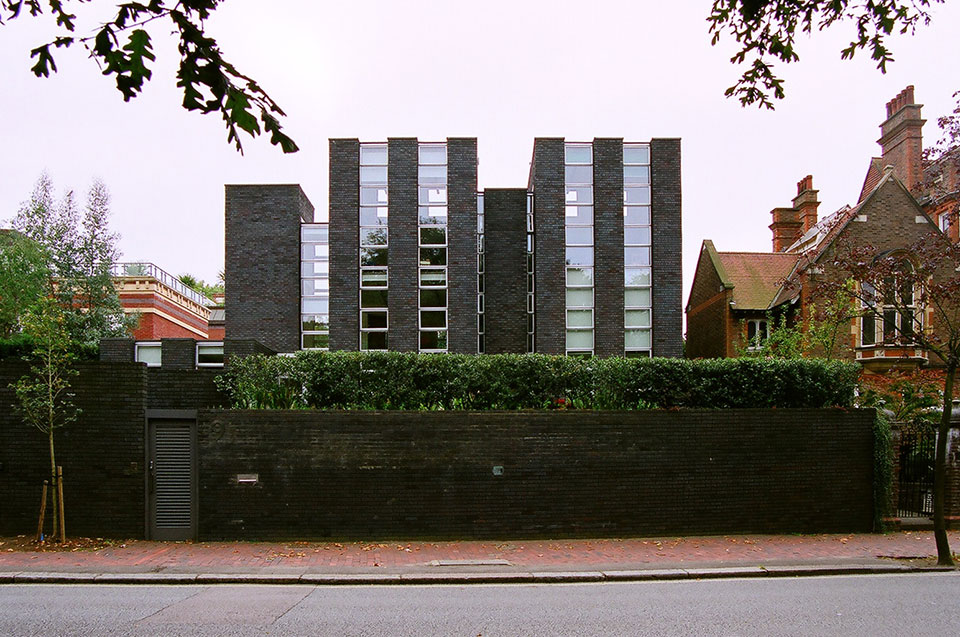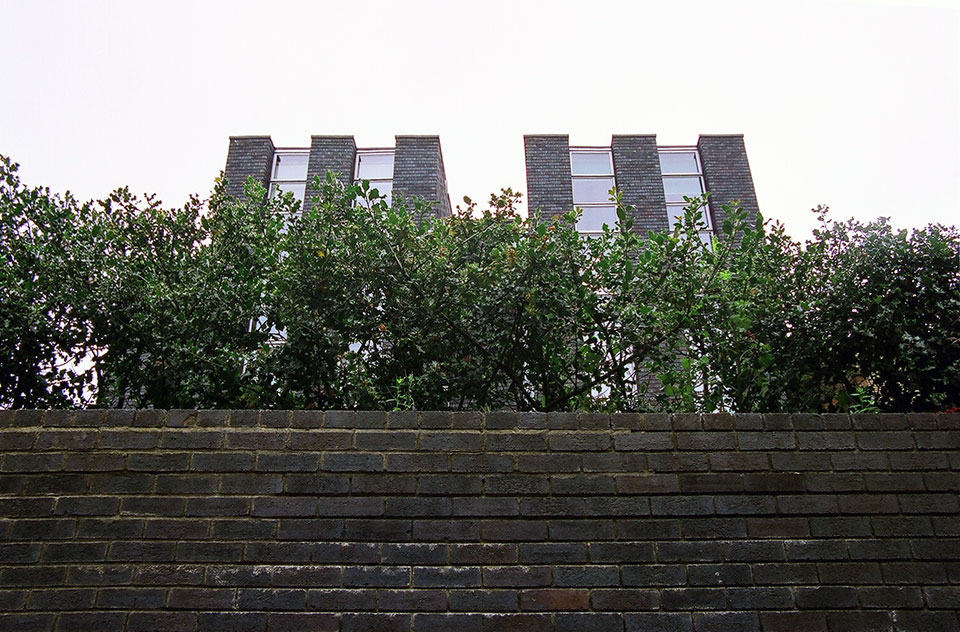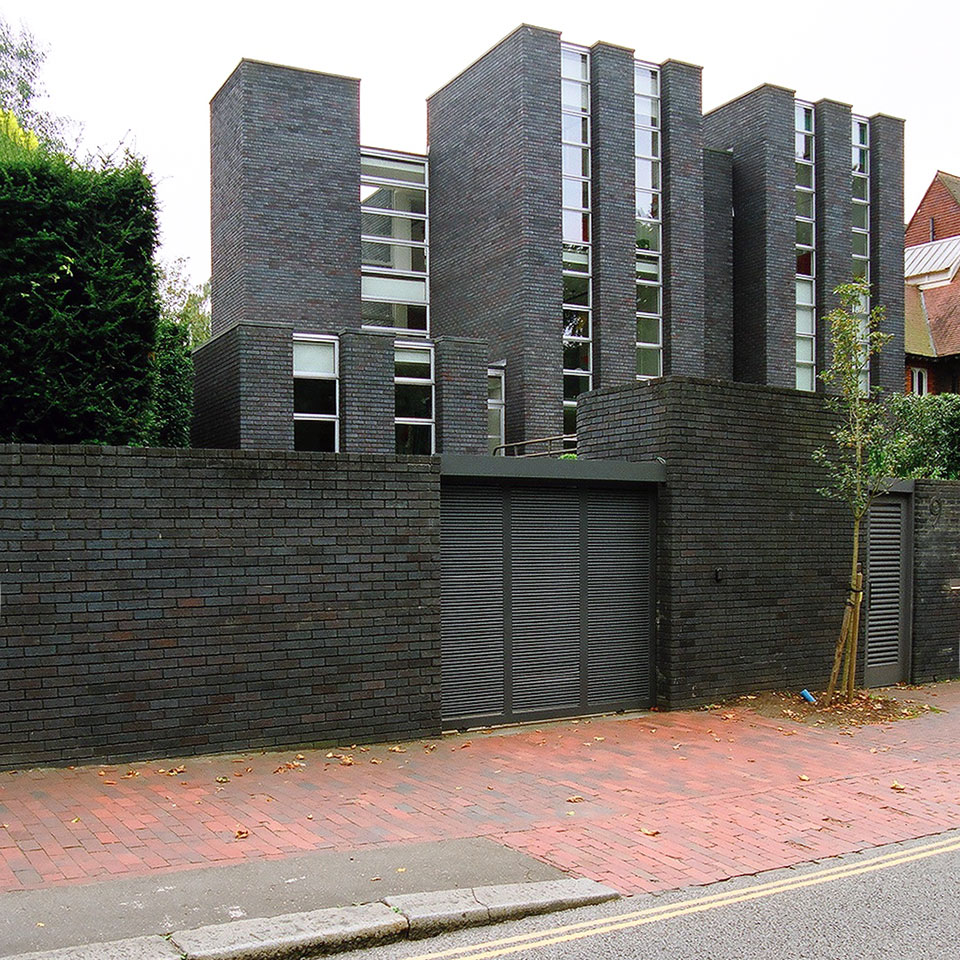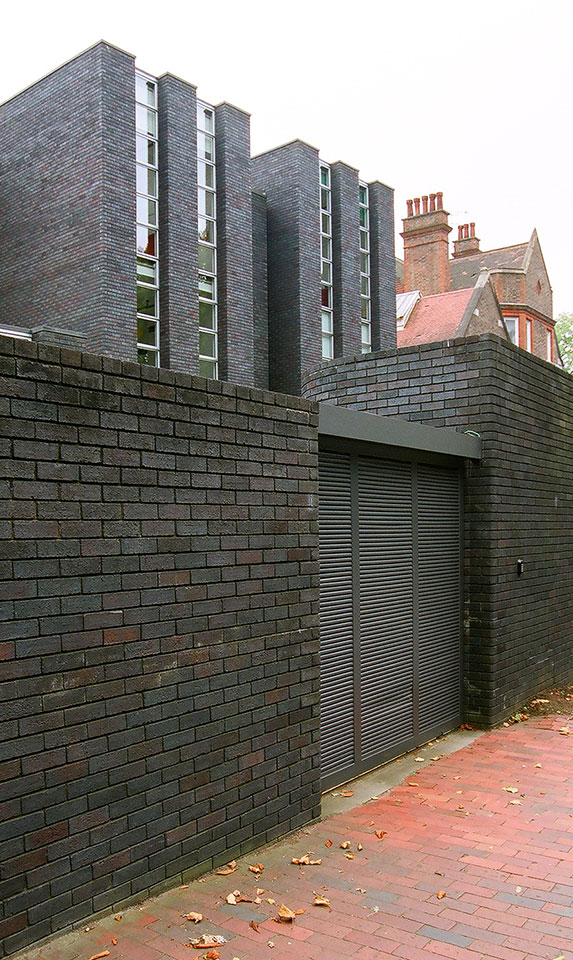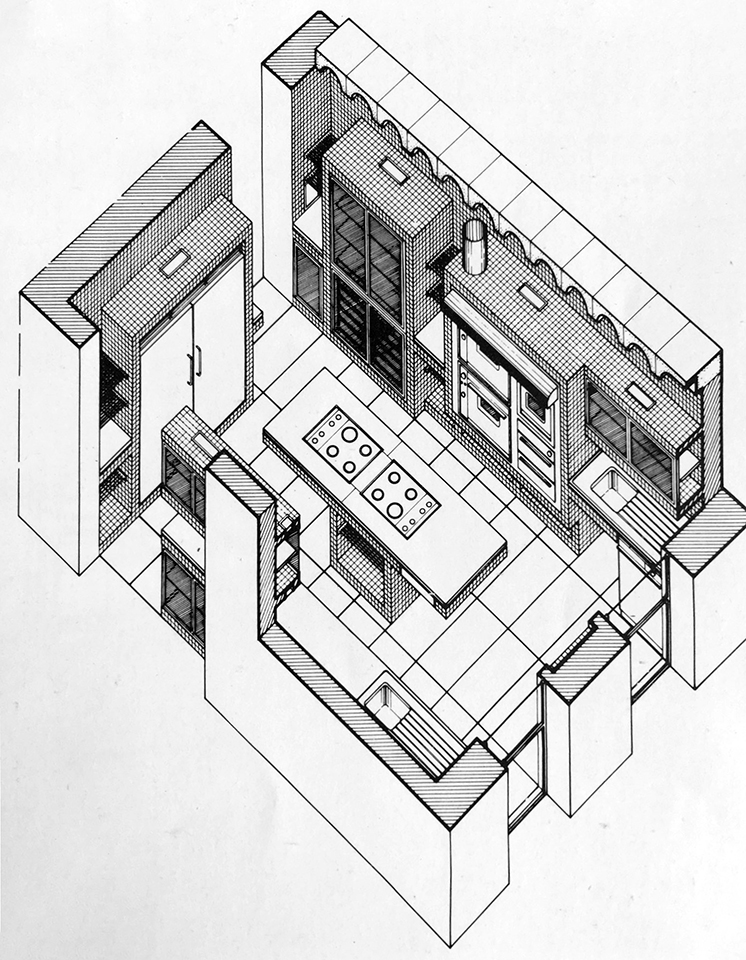Schreiber House
1964
The Schreiber House is a modern architect’s architecture. Rigorously organised according to a 3ft x 1½ft (0.9m x 0.45m) grid, the planning is relentlessly strict, but its adherence to such a contrived logic is surprisingly liberating in the spatial outcomes. The north facing site is highly defensive and recalls the nearby Victorian villas, set protectively in their own walled grounds. Gowan used the wall as a threshold to the street, but also to retain ground and to elevate the house so that the view from the interior appears to extend, unbroken, to Hampstead Heath beyond. C.S. Schreiber was an industrialist specialising in timber engineering and as a client afforded Gowan a high degree of freedom – apart from indicating a preference for natural materials and a desire for a spacious family home, there was said to be little more definition in the brief. Hence, the house appears to be an exercise thoroughly executed, so much so that conventional hierarchies of scale and order are subverted by the modular approach to the plan. The vertical expression of the exterior – a series of wide columns of blue engineering brick separated by banded aluminium framed double glazing – gives little away in terms of the internal functions. Indeed, it seems to neutralise any such reading and gives the outside machine-like qualities and does not instantly speak of ‘house’ or ‘home’, it could easily be read as a commercial building. The building was originally organised in layers over four floors, service rooms in the basement, living spaces on the ground floor, a master bedroom and study suite on the first floor and further bedrooms on the second floor. Each level was arranged as an open suite, but the strategically located doors could alter the character to form more enclosed and private spaces when required. Structurally, the brick piers supported pre-cast artificial stone reinforced concrete floor units that were devised according to the modular grid and when assembled created coffered ceilings that were faced with Bath stone. A large proportion of the fittings and furniture were designed with the client, built at his factory and constructed into the scheme, even the curtains were based on the planning module. The kitchen and bathroom were finished in San Stefano marble and matt glazed white tiles. A bronze and glass spiral stair connected the ground floor to the ancillary spaces of the basement, where the garage was finished with York stone paviours to match the exterior hard landscaping. Alongside a host of innovative gadgets that included a built in vacuum system, the outside paving could be electrically heated to keep it free of snow and ice in the winter! By 1969, the family had added a circular swimming pool with a domed roof to the rear of the property that sat in a planned axial relationship with the main house. The Schreiber House clearly references earlier work that Gowan made with James Stirling - Ham Common and the Isle of Wight house spring to mind - but also develops Gowan's more austere approach synonymous with this period of his work and in evidence in his schemes for the GLC at Trafalgar Road and Creek Road. The house was listed Grade II in 1998 and referred to by Historic England as ‘one of the most significant town house of the post-war period.’ [1]
[1] https://historicengland.org.uk/listing/the-list/list-entry/1379179?section=official-listing
